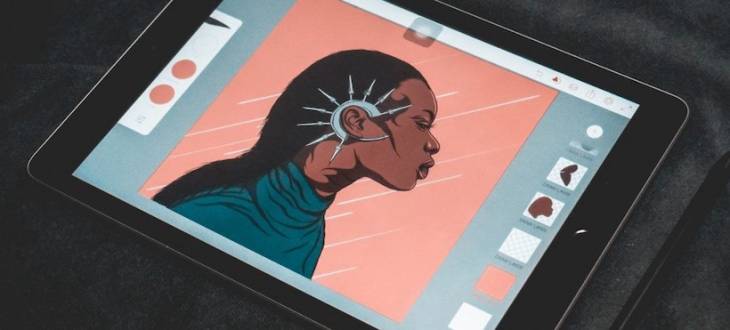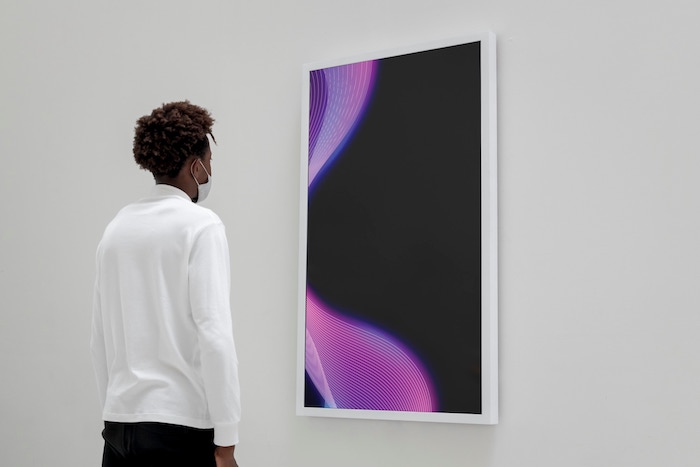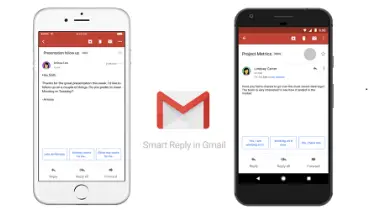Make Money Selling Digital Art

Digital art is a fast-growing niche that many artists have not explored enough. More focus is often invested in physical, tangible art work.
However, the possibilities are endless with digital art, because creativity reigns supreme in the electronic domain and the tools to make spectacular digital art are growing by the day.
Monetizing digital art is also easier than ever before, especially when compared with physical art pieces. How is this possible? We're glad you asked...
7 Strategies to Sell Digital Art & Make Good Money

Some of the best ways you can successfully sell digital art and make good money are:
1. List digital art pieces on marketplaces online
The idea of monetizing digital art depends on each type of piece. Some digital art is inanimate and does not have advanced visual aesthetics such as GIFs or videos. Such pieces can be sold as digital art prints on different marketplaces and platforms across the internet.
The different platforms and marketplaces that you can use for this purpose are plentiful on the internet, making selling digital art easier than ever before. For example, artists can list their art pieces on platforms such as Etsy and even on online auctions.
Visitors to the various online marketplaces will be able to see your digital art listing and purchase the art pieces that they like.
2. Print-out physical copies of your digital art for sale
Artists can also make significant revenue by either printing out their digital art pieces on a canvas or large paper, framing it, and selling the printed-out artwork o art lovers.
Selling art print-outs online is a good strategy as it minimizes costs and other risks because artists only have to print their work when customers order.
You can market your digital art prints using the various promotion channels in the cybersphere, on traditional print and broadcast media, and at physical locations.
3. Collaborate with brands to create unique artwork
Digital artists have a unique advantage over other creatives—they can offer ‘digital-first’ material designed for the digital world and optimized for digital consumption and appreciation.
In this digital age where brands are increasing migrating online, this is an appealing prospect for all. By collaborating with brands, digital artists can help them reach a growing, digitally native consumer class that is hungry for creative art and artistic expressions of brand products.
Most brands might have their own in-house graphic designer that handles routine tasks of designing promotional material and brand identity elements, but digital artists are free spirits and true natives of the digital sphere who can create digital art that really shines in the digital space.
As a digital artist, you can propose a different twist to brands’ traditional visual and graphic design strategies for a month or so, offering to create custom, original digital-first art pieces for brands’ events or during certain seasons and occasions to open up opportunities to sell your digital artwork.
4. Sell exclusive rights to your digital artwork
If you already have art pieces that work best with particular brand identities or that resonate well with certain audience demographics, consider proposing them to brands and selling exclusive rights to them for the brands’ promotional purposes. You can make good money this way.
One of the best strategies here is to sweet-talk brands and woo them into getting your work on their merchandise. Perhaps a particular digital art piece which you created has proven very popular online with young people. It could pair well with a brands clothing items like hoodies or t-shirts if weaved in as a special and unique addition to their clothing line or other merchandise.
Collaborating with brands in this way and tweaking your art to fit the needs of each company has high chances or profitability for both parties involved. It might just lead to a long-term partnership and collaboration with different brands, which could open a steady revenue stream for you.
5. Mint NFTs for sale
Advancing technology is a blessing that keeps on giving to artists. Besides providing many easy-to-use tools for creating digital art, technology advancement has given rise to unique and highly lucrative Non-Fungible Token (NFT) marketplaces for selling digital artwork.
An NFT is a digital asset that can be an image, audio clip, or GIF, and whose ownership is recorded on a tamper-proof digital ledger known as a blockchain. Blockchain is more than just a transaction processing system that powers cryptocurrencies like Bitcoin. It is also a technology that is creating a vibrant economy for artists where they can securely sell their digital art.
Through NFT platforms and marketplaces, artists can conveniently mint, promote, and sell NFTs on blockchain-powered platforms. Users can then trade your artwork, and that brings more exposure for your work and generates even more demand.
The blistering pace of the digitalization in our world today has meant that we all have digital lives. It is only natural that we would want to create, acquire, and or incorporate digital representations of music, sports, brands, art, and more into these worlds – and now that is possible with NFTs.
Non-fungible tokens are essentially digital representations of real-world items such as art, music, in-game items, and videos in secure digital form. And people are spending millions on NFTs marketplaces. In fact, some artists have racked up overnight fortunes from NFT markets and auctions.
The digital artist Grimes sold $6 million worth of digital art as NFTs, while the founder of Twitter sold the first tweet ever as NFT for over $2.9 million. Nyan Cat (an iconic GIF that was a viral internet sensation) was also sold for about $590,000 as an NFT in an online auction.
6. Sell soft copies of your art
Selling soft copies of digital artworks is a simple solution to monetizing art online. Instead of worrying about printing the art and selling physical prints, selling soft copies removes the headache and additional overhead costs.
A strategy you can use here is to curate the digital art you have to improve its marketability. The chances of selling a curated collection of art increases with a much higher likelihood of profitability.
Alternatively, digital artists can offer just one art piece at a time, depending on its value and consumer perception. There are also auctions dealing solely with digital art copies instead of physical art prints.
Explore all the available options pertinent to the type of art you are creating. There is no shortage of methods for selling soft copies of artwork without printing the pieces and shipping them out.
7. Work on commissioned art projects
Instead of creating art pieces beforehand and marketing them thereafter, you could choose to focus on marketing your skills and then getting custom art projects that pay for your skills.
This strategy can work really well with brands and individuals who want custom art that is both unique and personalized. Studies have actually shown that consumers are more likely to spend more on personalized items and experiences.
It does not get more personalized than a custom art piece commissioned by the consumer and created to their exact specifications down to each minute details. Consider providing these services and selling custom artwork to people and brands at their request.
Commissioned artwork can be very profitable, but you must make every effort to ensure the results are good and satisfy the consumers' expectations. To get started with this model, whip up a few projects to build a portfolio and demonstrate your skills. Then, market yourself using those pieces.







![Is Going Paperless Right for You? The Pros and Cons of a Digital Finance Trail [node:title]](/sites/default/files/styles/video_thumbnail_bottom/public/man-holding-credit-card-and-mobile-going-paperless.jpeg?itok=FYrdP5Bi)


![Featured Image - [node:title]](/sites/default/files/styles/video_thumbnail_bottom/public/considerations-when-outsourcing-business-lead_generation.jpg?itok=Gzp3OQBu)













